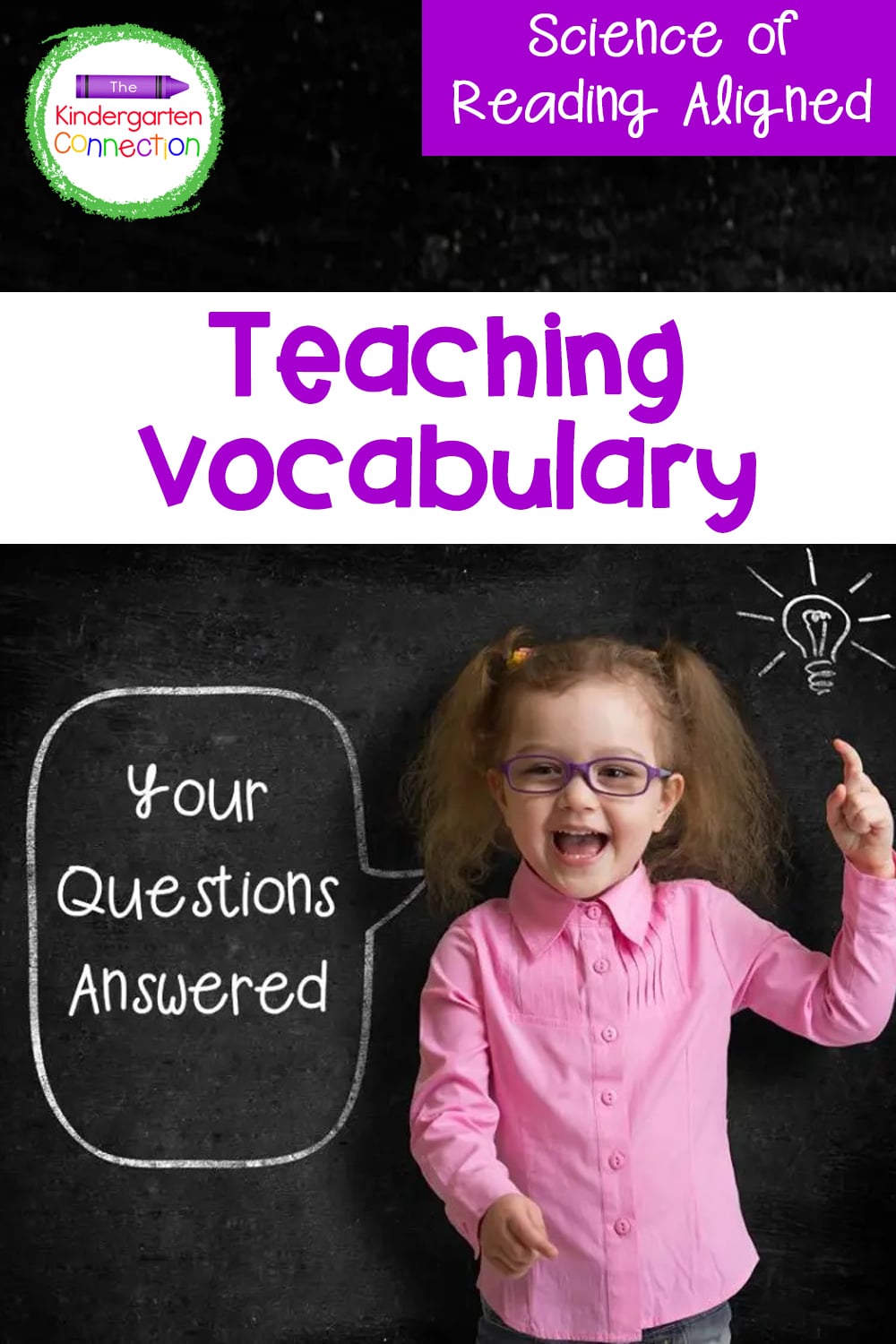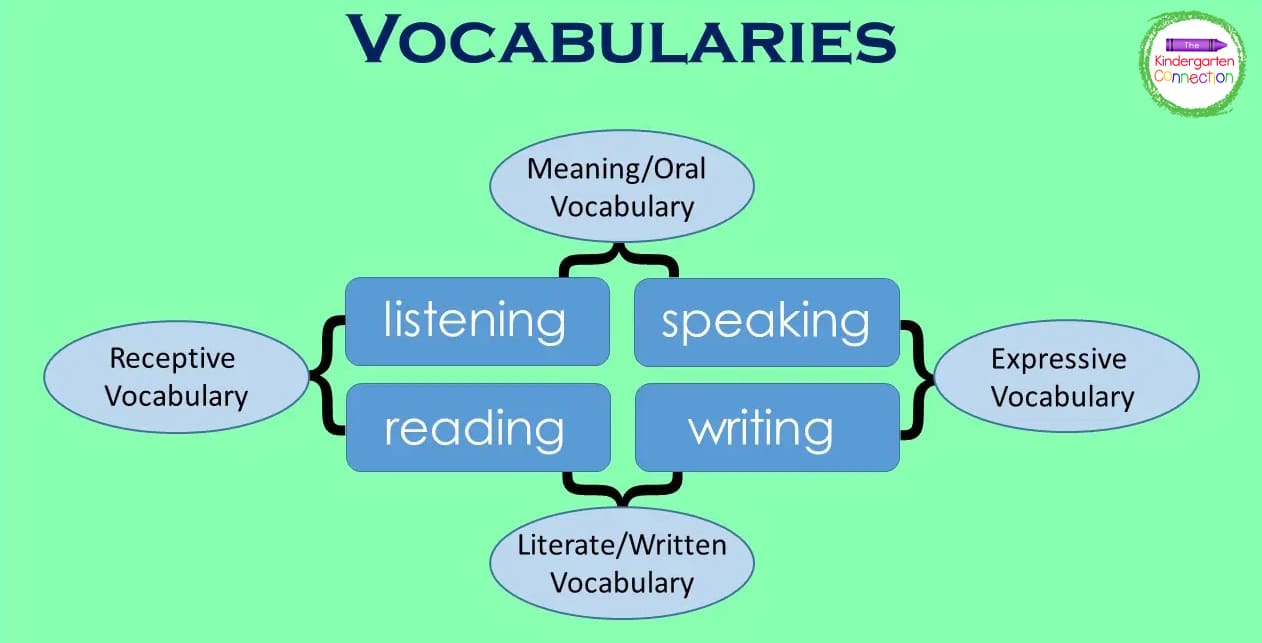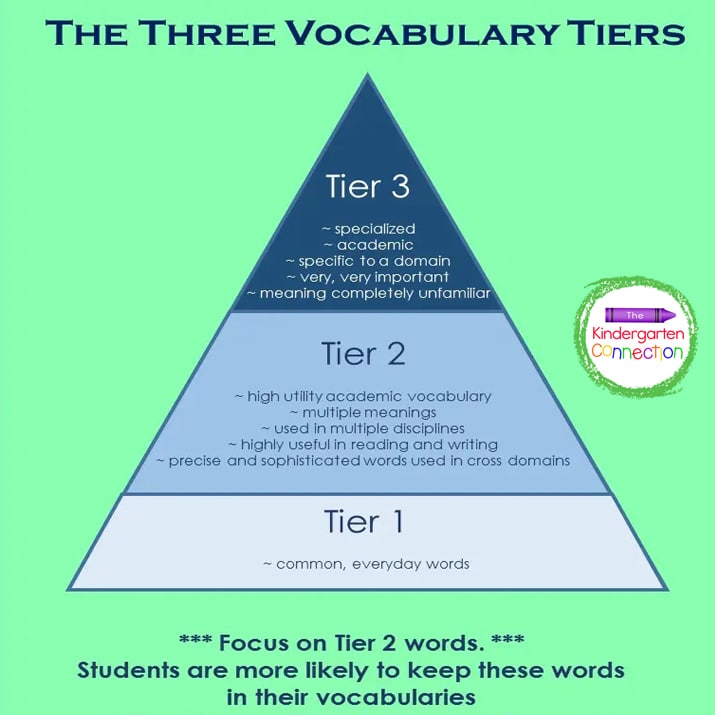Vocabulary knowledge is fundamental to reading success. It goes hand in hand with comprehension. A child simply cannot understand text without having a working knowledge of what the words actually mean. Just like phonemic awareness and phonics, vocabulary development is one of the five components of effective reading instruction. I’m here today to answer some important questions when it comes to teaching vocabulary.
*For even more resources to support early learners, be sure to grab our Easy Readers MEGA Bundle!

Teaching reading is a huge task. Big enough that a complete and comprehensive approach needs to be taken, which is why research now identifies that reading instruction should include five components or pillars:
Exclude one of those components and children may suffer in their reading skills and experience unnecessary difficulty in learning to read.
This post on vocabulary development is the third installment of five in this series. Visit the others linked in the list above.
Vocabulary is having an understanding of a working body of language with the knowledge of word meanings. More specifically, we usually refer to vocabulary as the kind of words that children must know to read demanding text.
There are two types of word knowledge associated with vocabulary: definition knowledge and contextual knowledge.
Both are important in developing vocabulary and research has found that instruction that includes both types of vocabulary knowledge is better than only one.
It quite literally is essential to reading. Children cannot understand a given text without a working knowledge of words and without having a complete understanding of their meaning. Like other components of reading, how big and strong a child’s vocabulary is, has an impact on how well that child will read, and the ease at which that child learns.
There is an alarming difference of word knowledge between children from disadvantaged backgrounds and those who come from advantaged backgrounds. And these differences begin well before children ever enter school. How much a child reads, or is read to, has a huge impact on how many words a child has in their arsenal. The reason for this is that the more a child reads, or is read to, the higher the frequency of exposure to new and repeated words.
Let’s take a look at some numbers and facts:
Clearly, the average class is filled with a very wide gap between the lowest and the highest performing students. That gap can be very intimidating to address.
There are four types of vocabulary, and each is important and has an impact on reading success.
Take a look at the chart below for how those vocabularies are developed and why they are important. It is evident that vocabulary is developed by more than simply teaching new definitions. In fact, that by itself may be quite ineffectual.

When it comes to vocabulary instruction, there are three tiers. These tiers help guide instruction so that teachers may spend their precious instructional time on the most important words for a student to know.
Surprisingly, these words are not always the really difficult, content-related vocabulary. Take a look at the following chart to understand why:

For success in teaching vocabulary, try some of these tips:
Just like teaching reading in kindergarten and above is made up of five important pillars of instruction, preschool literacy is also guided by its own four components. Check out these articles for more information about how to teach literacy in an early childhood classroom:
***As we continue to learn about the Science of Reading, we want to be up-to-date so that our articles are research-based. This post has recently been updated to be Science of Reading aligned.***
Guest post by Sarah from Stay at Home Educator
Your planning will be so much easier with instant access to:
Be sure to request an invitation so that you don’t miss your chance to be part of the best early childhood club around!
